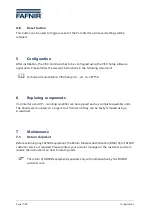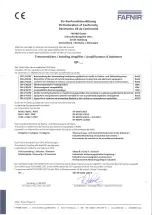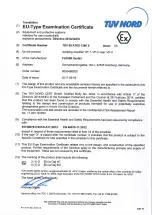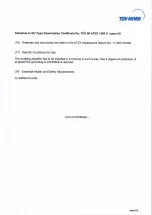
Installation
Page 10/28
4.3.1
Host interface
The serial host interface (galvanically isolated) for communication with a higher-level system,
e.g. POS, is designed to function as an RS-232 interface or an RS-485 interface. Depending on
requirements, the host computer can be connected to the RS-232 interface or the RS-485
interface. The data protocol for the interface can be selected using the VISY-Setup software
application and is determined by the host code entered. The VI-4 interface automatically
recognises the interface to which the host computer is connected.
Connect the host computer to the corresponding terminals of the host interface, as shown
below.
Figure 4: Host interface
A simultaneous operation of the RS-232 interface and the RS-485 interface is not
supported.
If the RS-485 interface is used, it is advisable (for reasons of interference resistance) to use a 3-
wire cable in order to also be able to connect the interface ground of the VISY-Command
(terminal
⊥
of the host interface) to the interface ground of the host system (if provided as a
connection terminal) in addition to the ports A+ and B-.
If shielded lines are used, the shield must be placed on the PE connection. Please also observe
the installation instructions for the device to be connected to the interface. If the shield cannot
be fitted on both sides, it is possible to work with a shield fitted to one side of the VISY-
Command only.
The RxD Host LED (red) indicates incoming data from the host computer.
The TxD Host LED (red) indicates outgoing data to the host computer.
Do not connect the line shield to the interface ground (
⊥
/GND).
Please note that the longer the line length, the greater the probability of equipo-
tential currents flowing through a line shield earthed on both sides. Depending on
local rules and regulations, it may be necessary to provide an additional equipo-
tential bonding between the connected devices.
Extension
Host














































